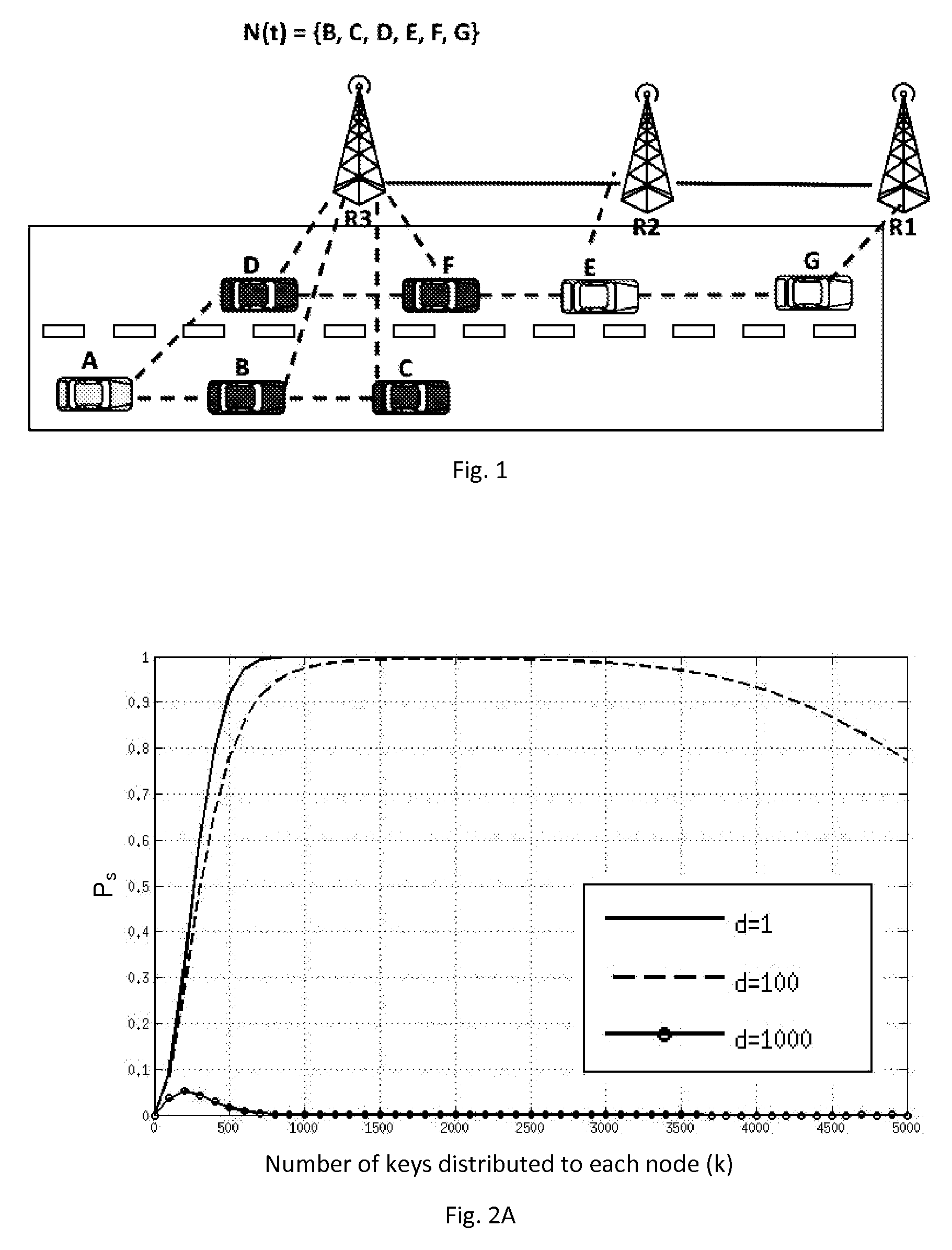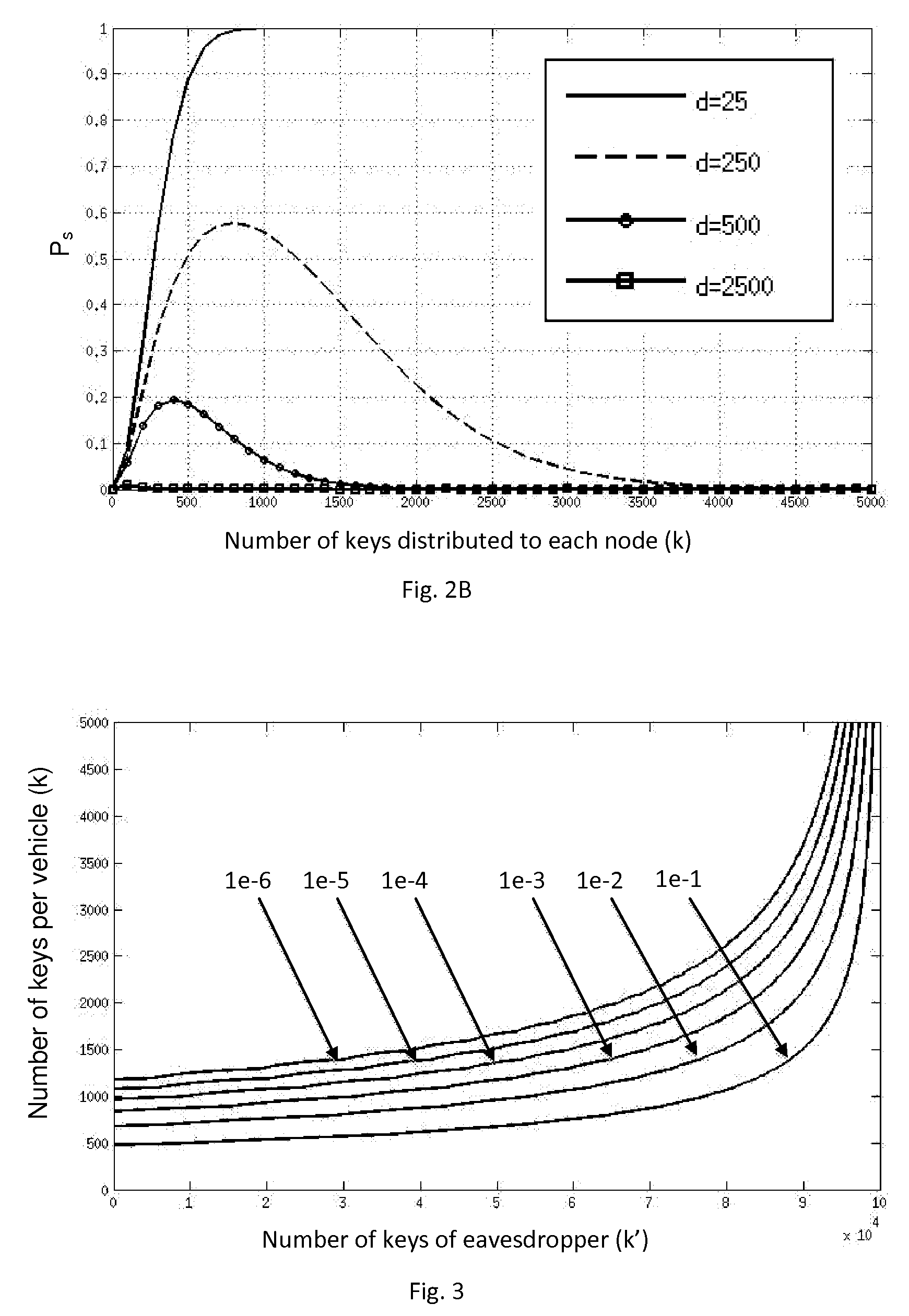Probabilistic key distribution in vehicular networks with infrastructure support
a technology of infrastructure support and probability distribution, applied in the direction of public key infrastructure trust model, wireless commuication services, transportation and packaging, etc., to achieve the effect of increasing the density of the rsu
- Summary
- Abstract
- Description
- Claims
- Application Information
AI Technical Summary
Benefits of technology
Problems solved by technology
Method used
Image
Examples
Embodiment Construction
[0109]Results from the previous section depend on a timely bootstrap of the system, which can be assessed through computer simulations. Focusing on urban environments, the STRAW mobility model [11] is used to simulate vehicular mobility on a 27 km2 area of downtown Pittsburgh, Pa., USA, characterized by a combination of Manhattan-like orthogonal and irregularly shaped intersections. The results presented comprise a vehicle density of ρ=10 vehicles / km2, which can be thought of as a sparse vehicular network. RSUs are randomly deployed with densities of 0.37, 0.92, and 1.82 RSUs / km2. For each RSU deployment density, 50 simulations were performed. Each simulation run was 270 seconds, with a 100 second warm-up period for the mobility model. The considered communication model is a unit-disk wireless model of 150 meters radius for vehicle-to-vehicle (V2V) communications and 300 meters radius for vehicle-to-infrastructure (V2I) communications. It has been shown that, for appropriate radius,...
PUM
 Login to View More
Login to View More Abstract
Description
Claims
Application Information
 Login to View More
Login to View More - R&D
- Intellectual Property
- Life Sciences
- Materials
- Tech Scout
- Unparalleled Data Quality
- Higher Quality Content
- 60% Fewer Hallucinations
Browse by: Latest US Patents, China's latest patents, Technical Efficacy Thesaurus, Application Domain, Technology Topic, Popular Technical Reports.
© 2025 PatSnap. All rights reserved.Legal|Privacy policy|Modern Slavery Act Transparency Statement|Sitemap|About US| Contact US: help@patsnap.com



